C++学习第十九天:类与对象:const修饰成员函数,友元,运算符重载-创新互联
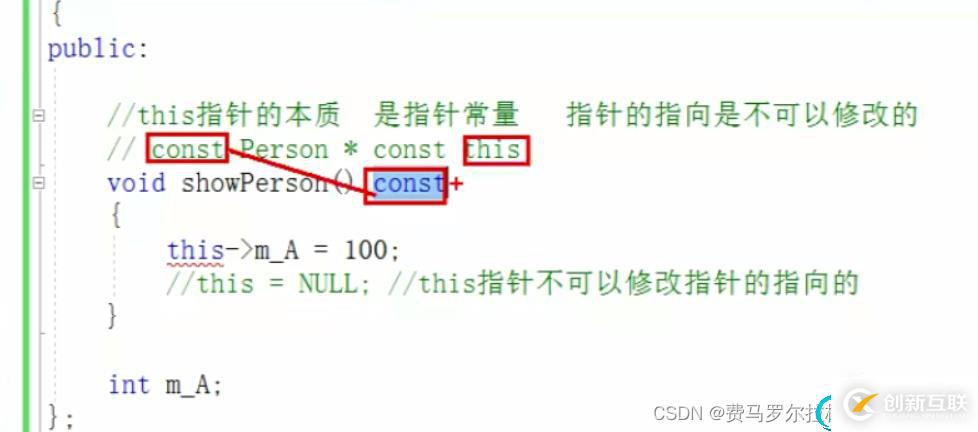
不可以修改成员的属性,在成员函数后面加const(既不可以修改指向,也不可以修改值),本质上是修饰的this指针,而this指针本质上是指针常量(哪个对象调用该成员函数,这个this指针就指向谁,不可以修改指针指向)。

2、mutable关键字
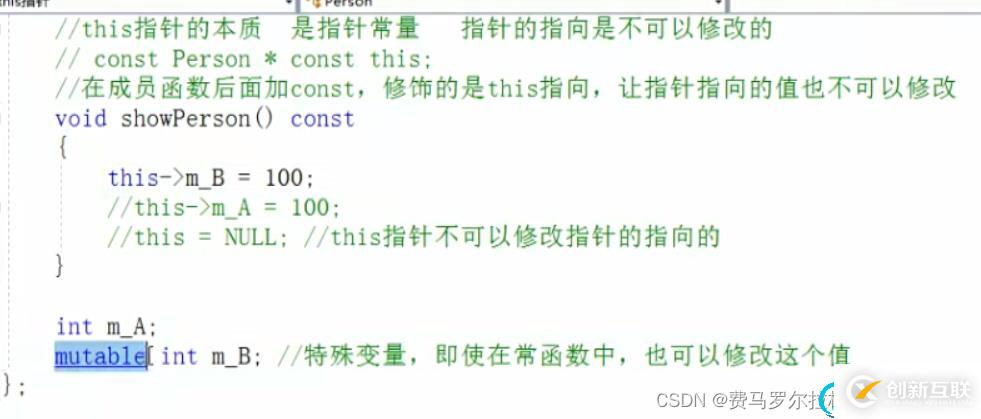
常对象不可以修改成员属性,且常对象只能调用常函数(联想到静态成员函数只能访问静态成员属性)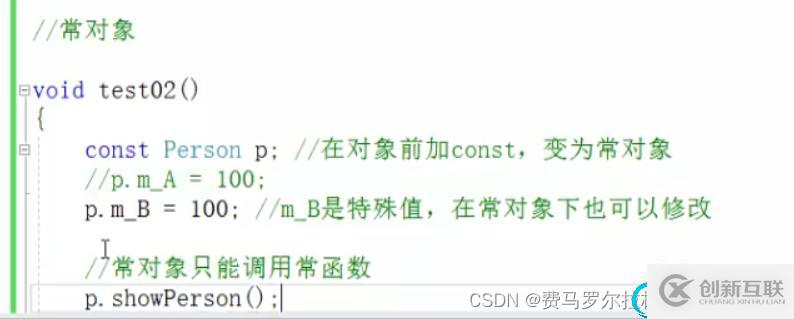
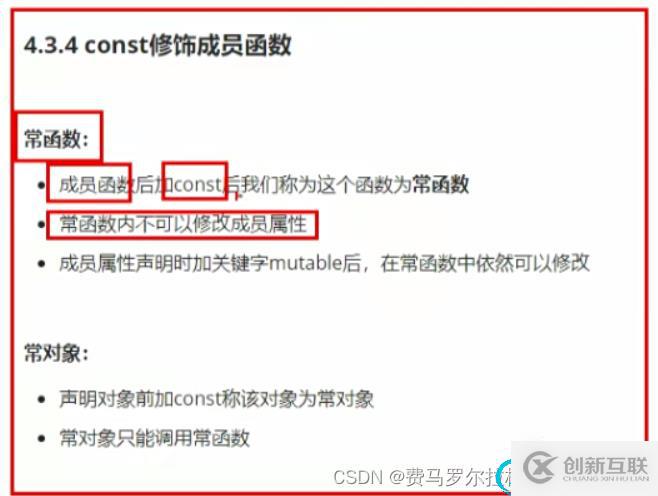
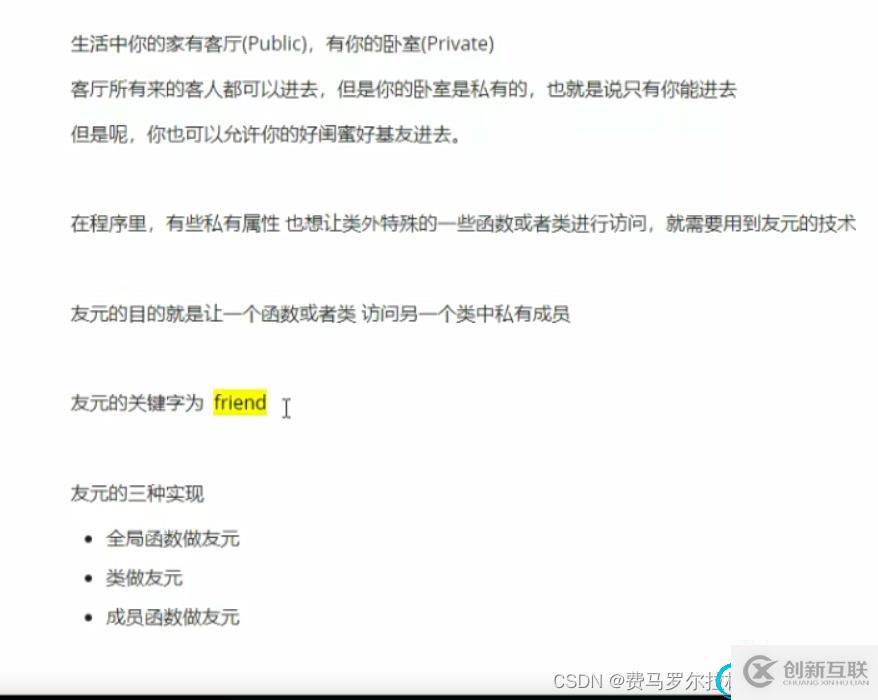
1、方法:在类中声明类外的全局函数是类的好朋友,在声明的前面加上friend。这样全局函数就可以访问类中私有成员属性
1、方法:在类中声明另一个类为友元,前面加friend修饰。
2、注意:类中的成员函数可以在类外实现,但是要在类中声明,在类外加类的作用域限制:building::building()
#includeusing namespace std;
#includeclass building
{friend class goodgay;
public:
string m_sitting_room;
building();
private:
string m_bed_room;
};
class goodgay
{public:
void visit(building& b)
{cout<< "好基友正在访问"<< b.m_sitting_room<< endl;
cout<< "好基友正在访问"<< b.m_bed_room<< endl;
}
};
building::building()
{m_sitting_room = "客厅";
m_bed_room = "卧室";
}
void test()
{building b1;
goodgay g;
g.visit(b1);
}
int main()
{test();
system("pause");
return 0;
} 在一个类中调用另一个类的成员方法
(1)类引用作为形参
class goodgay
{public:
void visit(building& b)
{cout<< "好基友正在访问"<< b.m_sitting_room<< endl;
cout<< "好基友正在访问"<< b.m_bed_room<< endl;
}
};(2)类作为另一个类的成员
#includeusing namespace std;
#includeclass goodgay;
class building
{friend goodgay;
public:
string m_sitting_room;
building();
private:
string m_bed_room;
};
class goodgay
{public:
building * b;
goodgay();//构造函数初始化成员属性
void visit();
};
building::building()
{m_sitting_room = "客厅";
m_bed_room = "卧室";
}
goodgay::goodgay()
{b = new(building);
}
void goodgay::visit()
{cout<< "好基友正在访问"<< b->m_sitting_room<< endl;
cout<< "好基友正在访问"<< b->m_bed_room<< endl;
}
void test()
{//building b;在创建g时就会调用构造函数创建b
goodgay g;
g.visit();
}
int main()
{test();
system("pause");
return 0;
}

对已有的运算符重新定义,赋予其它的功能。(对于内置的数据类型,编译器知道如何进行运算。)
1、加法运算符重载
operator +(对于加法重载的统一名称)
(1)通过成员函数进行加法
(2)通过全局函数进行加法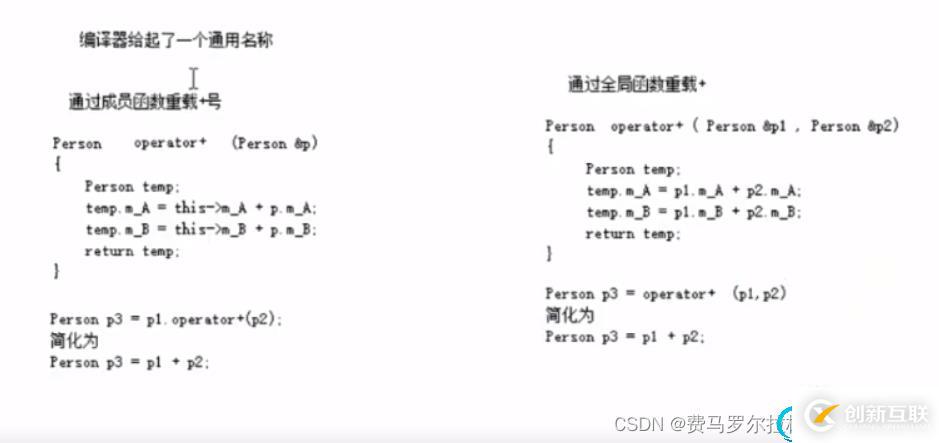
person operator+(person& b)
{person temp;
temp.m_a = this->m_a + b.m_a;
temp.m_b = this->m_b + b.m_b;
return temp;
}本质调用:person p3=p1.operator+(p2);
#includeusing namespace std;
//加号运算符重载
//1、成员函数实现加法运算符重载
//2、全局函数实现加法运算符重载
class person
{public:
int m_a;
int m_b;
};
//2
person operator+(person& a, person& b)
{person temp;
temp.m_a = a.m_a + b.m_a;
temp.m_b = a.m_b + b.m_b;
return temp;
}
void test()
{person p1;
p1.m_a = 20;
p1.m_b = 30;
person p2;
p2.m_a = 10;
p2.m_b = 20;
person p3 = p1 + p2;
cout<< p3.m_a<< endl;
cout<< p3.m_b<< endl;
}
int main()
{test();
system("pause");
return 0;
}
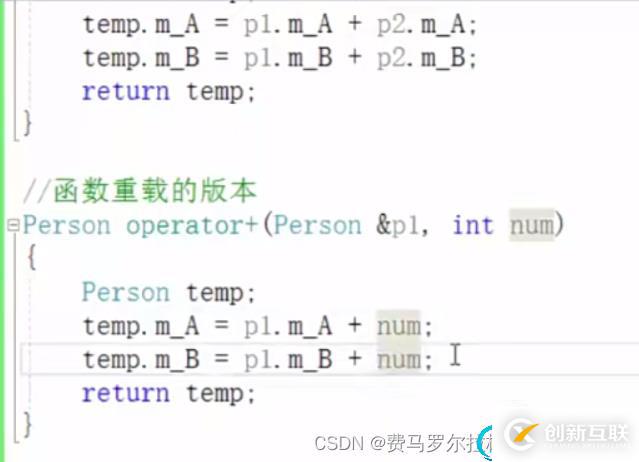
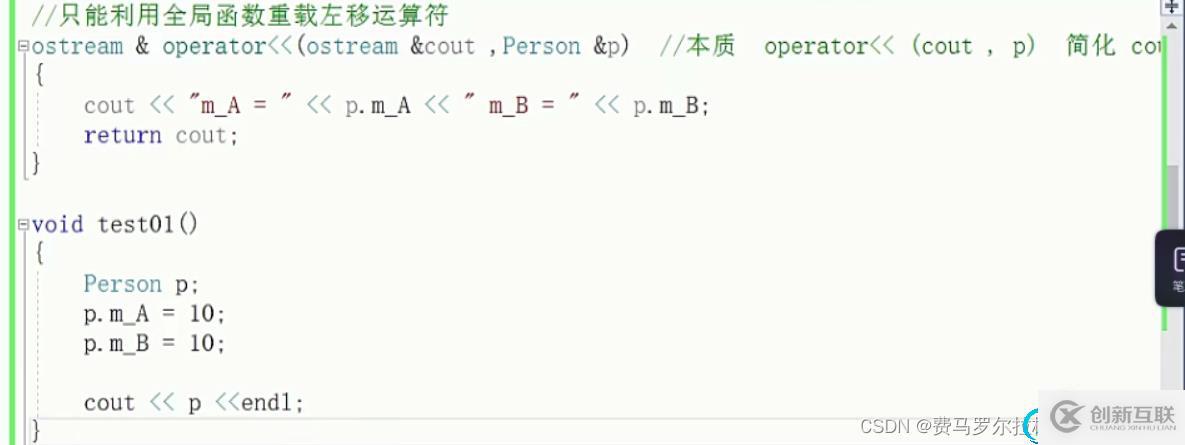
out属于ostream类型,ostream对象有且只能有一个,所以重载时需要用引用;
由于cout只能在运算符左侧,所以只能用全局函数进行运算符重载;
想要链式输出,则需要返回ostream的引用。
左移运算符配合友元可以输出自定义运算符。
回忆自定义递增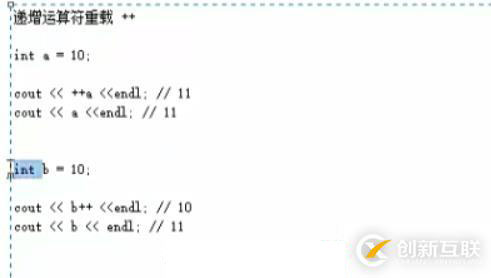
前置递增
#includeusing namespace std;
//前置递增重载
//后置递增重载
class number
{friend ostream& operator<<(ostream& cout, number& n1);
private:
int m_a;
public:
number(int a);
number& operator++()
{++m_a;
return *this;
}
};
number::number(int a)
{m_a = a;
}
ostream& operator<<(ostream& cout, number& n1)
{cout<< n1.m_a<< endl;
return cout;
}
int main()
{number n1(10);
cout<< ++(++n1)<< endl;
system("pause");
return 0;
}
前置递增运算符重载,返回的是引用。为了一直对一个数据进行递增,如果返回的是值,那么返回的不是本体,而是他的复制。
后置递增
#includeusing namespace std;
//前置递增重载
//后置递增重载
class number
{friend ostream& operator<<(ostream& cout, number& n1);
int m_a;
public:
number(int a)
{m_a = a;
}
number& operator++()
{++m_a;
return *this;
}
number& operator++(int)//int为占位符,将后置和前置递增区分开来
{number temp = *this;
m_a++;
return temp;
}
};
ostream& operator<<(ostream& cout, number& n1)
{cout<< n1.m_a<< endl;
return cout;
}
int main()
{number n1(10);
cout<< n1++<< endl;
cout<< n1<< endl;
system("pause");
return 0;
}
你是否还在寻找稳定的海外服务器提供商?创新互联www.cdcxhl.cn海外机房具备T级流量清洗系统配攻击溯源,准确流量调度确保服务器高可用性,企业级服务器适合批量采购,新人活动首月15元起,快前往官网查看详情吧
当前文章:C++学习第十九天:类与对象:const修饰成员函数,友元,运算符重载-创新互联
网页地址:https://www.cdcxhl.com/article18/dedpgp.html
成都网站建设公司_创新互联,为您提供App设计、动态网站、网站策划、企业网站制作、自适应网站、移动网站建设
声明:本网站发布的内容(图片、视频和文字)以用户投稿、用户转载内容为主,如果涉及侵权请尽快告知,我们将会在第一时间删除。文章观点不代表本网站立场,如需处理请联系客服。电话:028-86922220;邮箱:631063699@qq.com。内容未经允许不得转载,或转载时需注明来源: 创新互联

- 什么是动态网站和什么是静态网站?有什么区别? 2015-02-11
- 动态网站有着什么样的特点呢?-网站建设创新互联科技 2021-08-13
- 动态网页对于企业建站起到的作用 2016-10-18
- 需要做网站的老铁们,面对静态网站和动态网站我们该如何选择? 2022-04-16
- 高端动态网站我们要如何优化 2017-02-26
- 行业动态网站不应只有实用性 2022-05-01
- 静态网站和动态网站的区别以优劣点? 2022-09-24
- 网站建设动态和静态哪个好? 2016-11-12
- 大型网站制作架构设计说明书-动态网站制作方案 2022-08-12
- 百度SEO优化-为什么网站伪静态有利于优化、动态链接不利于优化 2016-11-07
- 动态网站与静态网站的优缺点 2016-12-04
- 什么是共享(独享)IP、动态(静态)IP、固定IP? 2016-11-10